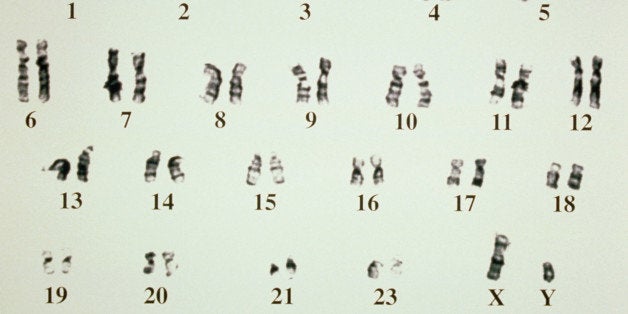
Despite theories that the Y chromosome may one day disappear, new research suggests not only that the chromosome will continue to exist but also that it will maintain its current size and remaining genes.
The human X and Y chromosomes -- the pairing of which determine whether a baby is born male (XY) or female (XX) -- were once nearly identical. But over the past 180 million years, the Y chromosome has shrunk considerably, losing 90 percent of its genes. After scientists learned of this phenomenon, some theorized that the chromosome might continue shrinking and one day disappear entirely.
Some mammals have already lost their Y chromosome, like the Ryukyu spiny rats found only in the Amami Islands off the coast of Japan. Because sex genes can jump to another chromosome, the animals are still able to produce both males and females. A similar change in humans would not therefore mean the end of men, although the loss of Y would certainly be an enormous evolutionary shift.
But according to a University of California, Berkeley study published Thursday in the journal PLOS Genetics, the Y chromosome will stop shedding genes.
"Our study demonstrates that the genes that have been maintained are important, and the human Y is going to stick around for a long while," lead researcher Melissa Wilson Sayres, an environmental biologist at the university, said in a written statement.
"What we show is that after that initial loss of genes, the primate lineage has been whittled down to a core set of genes that are necessary in humans for function," Wilson Sayres told The Huffington Post. "Although there was initially a huge loss of genes from the Y chromosome, that rate of loss has transitioned from a gush to a trickle, and we expect that there will not be much more loss from the human Y chromosome."
To determine this, the researchers examined the Y chromosomes of eight African and eight European men and found "low Y diversity" -- meaning the chromosomes were nearly identical, despite the geographic gap.
The researchers wondered how the Y chromosomes could have become so similar. One conclusion might be that a smaller proportion of men than women were reproducing. However, Wilson Sayres said the chromosomes were too similar for that theory to explain it all.
"That wouldn't be nearly enough to reduce the variations to those levels," she said, calculating that if fewer males in the reproductive line were the only cause of the low variability between the chromosomes, it would have to mean that fewer than 25 percent of males throughout history had reproduced.
Instead, she said, "There had to be some kind of natural selection at work." According to Wilson Sayres, the Y chromosome has not been crumbling away needlessly but selectively purifying itself.
"By dropping genes, Y is able to purge itself of harmful mutations," she said.
Why doesn't this happen to the X chromosome?
The X chromosome has a partner in females (XX), while the Y chromosome is by itself in males (XY). In females, X can swap DNA with its partner in the event of a genetic mutation, allowing the chromosome to fix itself and continue carrying thousands of healthy genes.
"X and Y, however, do not swap DNA over most of their lengths, which means that the Y cannot efficiently fix mistakes, so it has degraded over time,” Wilson Sayres said. The Y simply sheds a faulty gene. It's now down to 27 unique genes.
That raises another troubling question: If Y does not lose any more genes, will genetic mutation become more common in males? Wilson Sayres said that so-called male mutation bias is what she's investigating next.
